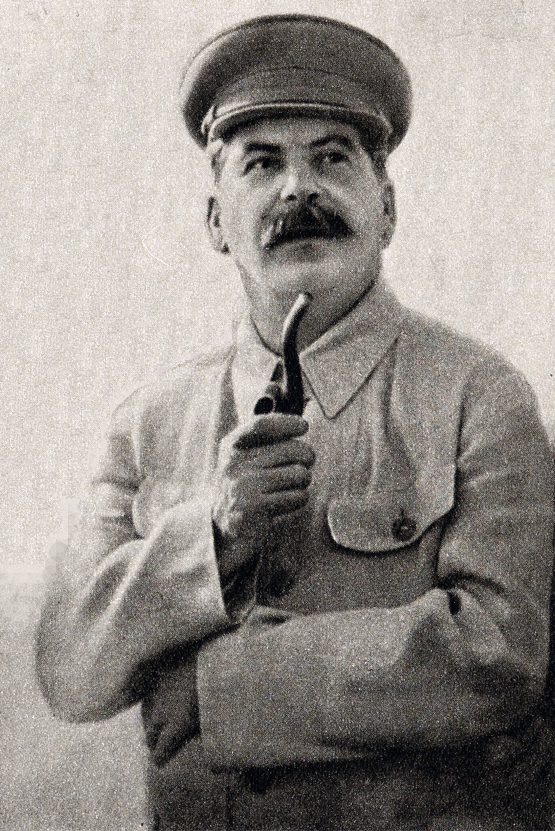
During the Cold War and after, estimates of the number of deaths that Soviet dictator Josef Stalin was responsible for had numbered 20 million and even as high as 60 million. The following is an excerpt from “Chapter 3: The Stalin Era and WWII” of my forthcoming book. This excerpt discusses updated estimates based on more recently available material, including from the Soviet/Russian archives, as well as where the original inflated estimates originated. The famines of 1930 – 1933, including in Ukraine and Kazakhstan, are discussed in more detail in a later part of the chapter. – Natylie
Stalin’s Terror and the Gulags
The Soviet labor camps were first established in 1919 and housed aristocrats and former members of the Provisional Government (Gulag Museum 2017). But the gulags, in which prisoners toiled in extreme weather conditions with insufficient provisions, were greatly expanded under Stalin’s rule, swelling during the Great Purge of 1936 – 1938 when 1.5 million were arrested. Approximately 750,000 were executed during this same period (Gulag Museum 2017).
A very high proportion of the arrestees were party officials, including military officers, party secretaries and factory managers (Harris 2016). By January of 1938, it was already being acknowledged within the Central Committee that the scale of the arrests was becoming counter-productive as the fear they elicited among party officials was undermining job performance (Harris 2016).
It is recognized that Stalin’s head of the NKVD (political police and pre-cursor to the KGB), Nikolai Yezhov, was largely responsible for carrying out the Great Terror of 1936 – 1938 as well as shaping Stalin’s understanding of the alleged conspiracies to undermine the Soviet government. As James Harris explains in The Great Fear: Stalin’s Terror of the 1930’s:
His commitment to break the conspiracies against the regime and root out enemies was doomed to fail because the conspiracies and enemies were largely chimaeric products of a misguided reading of flawed intelligence. Accelerating the patterns of arrests, interrogations, execution and exile deepened the appearance of conspiracy and enemy activity. Because the NKVD acted overwhelmingly on the content of denunciations or “confessions” obtained under torture, and not on physical evidence of counterrevolutionary conduct, they could never get to the “bottom” of conspiracy (Harris 2016).
Yehzov was eventually hoisted on his own petard when a backlog of appeals against NKVD convictions mounted and compromising materials against him surfaced. This was compounded when an NKVD colleague stationed in Japan defected, which led to suspicions that Yehzov was going after innocent citizens while protecting real enemies in his midst. Stalin fired Yehzov in November of 1938, replacing him with Lavrenti Beria, and used him as a scapegoat for the recent excesses, although Stalin himself had personally overseen and approved lists of citizens to be arrested and executed. By 1939, the number of arrests had tapered off (Harris 2016).
It should be noted that the number of deaths that Stalin was purportedly responsible for during his long reign was greatly inflated during the Cold War era when Robert Conquest’s 1968 book The Great Terror first estimated approximately 20 million deaths (NYT 2015). Conquest, a former British intelligence officer, admitted that he was an unapologetic Cold Warrior who thought that the Soviet Union and Stalin could best be understood as a science fiction story world and character (Fitzpatrick 2019). Cold War propagandizing and caricaturized thinking likely played a role in this characterization of Stalin as Conquest generalized out from various sources, including claims by Soviet defectors (Fitzpatrick 2019).
Even popular historian Timothy Snyder, who shows little sympathy for Russia, estimates that Stalin is likely responsible for closer to 6 – 8 million deaths (Snyder 2011), based on research for his 2010 book Bloodlands. According to Snyder, with the exception of the war period from 1941 – 1945, the vast majority of prisoners left the gulags alive. The total number of Soviet citizens who died in the gulags for the entire Stalinist period is between 2 and 3 million, which is still an astounding number (Snyder 2011).
Snyder’s overall figure includes estimates for the famines of 1930 – 1933 of which the famine that specifically took place in Ukraine, often referred to as The Holodomor, is estimated at 3.3 million out of the total of 5 million (Snyder 2011).
Sources:
- My visit to the Gulag Museum in Moscow, May/2017;
- Harris, James. The Great Fear: Stalin’s Terror of the 1930’s. Oxford University Press. Oxford, UK. 2016;
- “Robert Conquest, Historian Who Documented Soviet Horrors, Dies at 98” by William Grimes. New York Times. 8/4/15;
- “People and Martians” by Sheila Fitzpatrick. London Review of Books. 1/24/19;
- “Hitler vs. Stalin: Who Was Worse?” by Timothy Snyder. New York Review of Books. 1/27/11.
If you have never read it I strongly recommend you get a copy of the book “Operation Splinter Factor” by Stewart Steven. It is out of print but available on Amazon. It will help put things in perspective and provide clear proof of how the National Security State will do whatever it takes (including feeding non-stop propaganda (i.e., lies) to people in the West) in the pursuit of ensuring total, unchallenged global hegemony.
Hi Natylie…Thank you for these articles, illustrating the complexity of this issue.
I am wondering if you have followed any of these articles in Global Research, many by Andrew Korybko, on Russia’s complicated relationship to Israel–as well as other countries in the region. Below the article are reference to other related articles.
https://www.globalresearch.ca/israels-latest-strikes-syria-prove-jerusalem-summit-success/5682331?utm_campaign=magnet&utm_source=article_page&utm_medium=related_articles